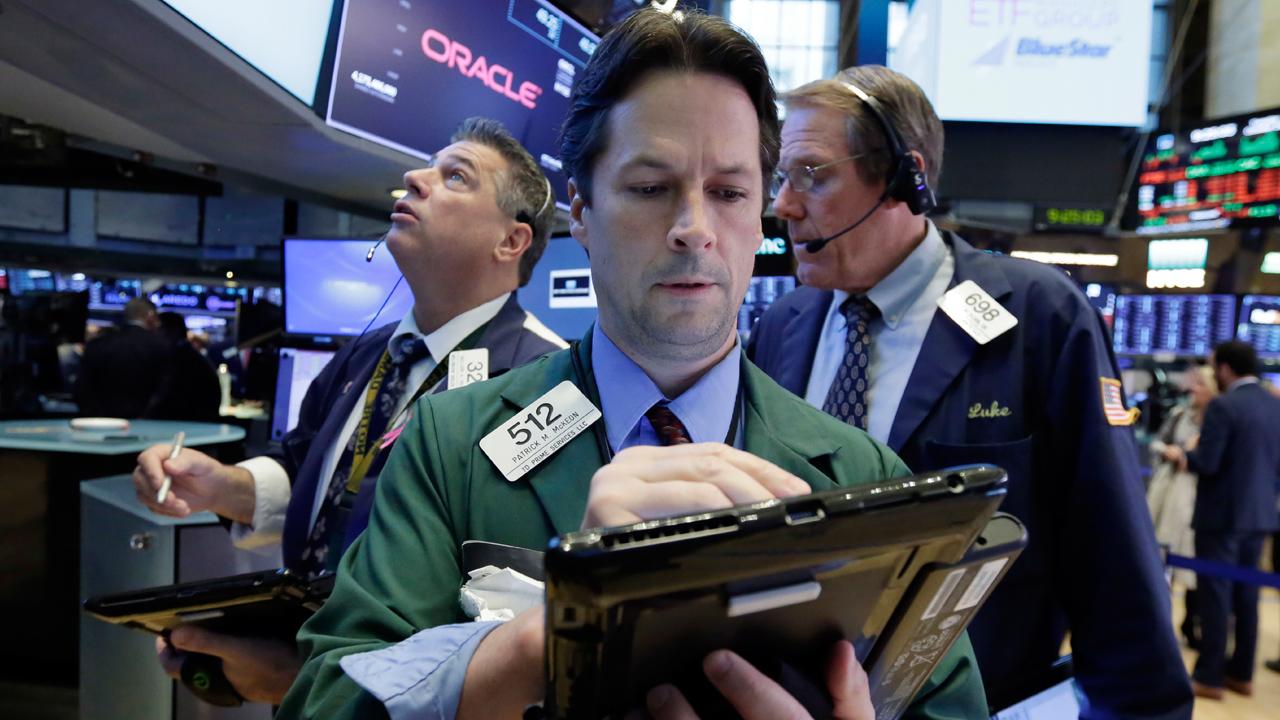Stock-market investors aren't afraid of the Fed anymore
The Federal Reserve is widely expected to deliver its third and final rate increase of 2017 in the coming week and the stock market does not seem to even blink an eye about it.
In part, that's because the long-telegraphed move is nearly 100% priced in, according to CME's FedWatch tool.
But it may also have something to do with the market growing less dependent on loose monetary policy.
The S&P 500 is back in record territory, having recovered from a technology selloff to end the last week on a positive note. For the year, the benchmark index is up more than 18%, largely driven by stellar earnings growth and a favorable economic backdrop.
Fed policy is still reasonably accommodative and investors are not paying too much attention to rate hikes at this stage," said Jack Ablin, chief investment officer at BMO Private Bank.
Investors are not only paying too little attention to the Fed, they may also be underestimating the pace of future rate hikes. According to the Fed funds futures market, investors expect only about two rate increase by the end of 2018.
Meanwhile, the Fed's so-called dot plot suggests policy makers are planning to deliver four rate hikes by the end of next year.
Tim Duy, economics professor of practice and senior director of the Oregon Economic Forum at the University of Oregon, in his latest FedWatch post wrote that the Fed is likely to deliver three more hikes.
"I think the majority of Fed policy makers...are more likely than not to see the solid growth of the past three quarters as a signal that the economy will overheat without the projected additional rate hikes in December (25 basis points) and next year (75 basis points). Which is why I expect that as long as the economy looks likely to drive unemployment rate lower, the Fed will remain biased toward hiking rates," Duy wrote.
But none of this will matter to the economy, or to the market, according to Ablin.
"The market tends to underestimate reality, but it's OK because there is plenty of time for the market to adjust expectations. But the main point is that the Fed is not moving markets any more," said Ablin.
U.S. equity investors have also taken in stride the Fed's plans to shrink its balance sheet, which it began unwinding in October, and the departure of Chairwoman Janet Yellen, who is set to be replaced by Jerome Powell, a member of the Fed's board of governors, in February. That means the December meeting is Yellen's last.
"The mantra at the Fed is 'do no harm.' They really would not want to be blamed for bringing about a recession by being aggressive. As long as the economy continues to grow at around a 2% rate, they can safely raise up to four times," Ablin said.
The November employment report released Friday showed that the U.S. economy added 228,000 jobs, while the unemployment rate was unchanged at 4.1%. Wage growth, at 0.2%, however, remained tepid.
While stagnant wages are not particularly good news for consumers and worker, they are excellent news for corporations.
"The jobs reports highlights the Goldilocks environment: continued growth but no profit pressure of rising labor costs," said Tina Byles Williams, chief investment officer at FIS Group.
Williams cautioned that we are in the final cycle of profit strength, which already have been baked into equity prices.
The main risk to equities at this stage would come from complacency, according to Williams.
"Markets have shrugged off pretty much all of geopolitical risks in 2017 and investors have grown complacent. And when policy and earnings are all baked in, there is a higher risk from surprises that jolt the market," Williams said.
Next week investors will get a fresh batch of indicators on the economy.
Inflation data are on tap in the coming week. The November producer-price index is due on Tuesday, while the consumer prices index is set for release on Wednesday.
The Fed's two-day policy meeting will end on Wednesday, with the announcement of its policy decision at 2 p.m. Eastern. The announcement will be followed by Yellen's last news conference as Fed chief. at 2:30 p.m.
Other data highlights include retail sales and weekly jobless claims on Thursday, along with import and export prices and business inventories. Import Export prices as well as Business inventories are due the same day.
The December Empire State index is due on Friday, along with November data on industrial production and capacity utilization.




















